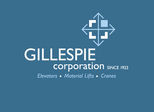- Glenn Siegel
- Mar 1, 2019
In John Corbett’s handy book, A Listener’s Guide to Free Improvisation, the Chicago writer and producer talks at length about “interaction dynamics,” advising us to pay attention to how musicians engage with one another in performance. When players are freely improvising, the usual signposts: steady rhythm, conventional harmony, melody, are missing or obscured. The juicy part, the thing that makes this music so special and so different from other types of music, is the lack of prearrangement. Because they are making it up as they go along, improvisers must listen deeply to their partners and be comfortable interacting in different ways on multiple levels.
Josh Sinton’s Predicate Trio: Christopher Hoffman, cello, Tom Rainey, drums, and the leader on baritone saxophone and bass clarinet, had some serious interaction dynamics going on Sunday, February 24 at the Northampton Center for the Arts, courtesy of Pioneer Valley Jazz Shares.
Although there was composed material, like “A Dance”, “Bell-ell-ell-ell-ells” and “Propulse,” that was tuneful and swung like mad, most of the 70-minute set had an open quality that emphasized spontaneous, non-idiomatic improvising by three accomplished instrumentalists.
The Trio’s recent Iluso release is called, making bones, taking draughts, bearing unstable millstones pridefully, idiotically, prosaically, which Sinton made acrostically from the nine track titles. The band used Sinton’s bare compositions to create sound worlds with distinct colors. There were small delicious moments when a single instrument filled the room, and other times when one musician would drop out, letting us eavesdrop on a dialogue. But what I focused on much of the time was how the three would share the spotlight, continually moving from background to foreground, and back again. Supporting each other, bringing up new topics, kibitzing, commenting, commanding attention with an unusual sound.
Tom Rainey is calm behind the kit (he’s from California,) but has a restless energy that has served bandleaders like Tim Berne, Nels Cline, Tony Malaby, and Ingrid Laubrock well. After years of service as a valued side man, in 2010 he started his own band, a trio with Laubrock and Mary Halvorson. They appeared at the Institute for the Musical Arts two years ago. On Sunday he was unfussy and just loud enough. His time was perfect. “He’s like the Fred Astaire of the drums,” Sinton said.
“I first met Chris before he started working with Henry Threadgill,” Sinton said, “and I loved his playing right away, its clarity, musicality and avoidance of cleverness for its own sake.” Hoffman is also a film maker and has worked with Yoko Ono, Iron & Wine, Ryan Adams, Marc Ribot and Anat Cohen, and played in the musical Spring Awakening. Over dinner, his description of life in a Broadway pit band was a rude awakening. The fact he’s been a member of Threadgill’s inner circle since 2011 tells you all you need to know about his musical IQ.
Josh Sinton is deservedly gaining reputation for his double-barrel baritone saxophone and bass clarinet playing. His Steve Lacy-inspired project, Ideal Bread, which was part of season one of Jazz Shares, remains one of my favorite contemporary ensembles. His work with Nate Wooley’s Quintet is also noteworthy. Sinton’s keen intelligence and prodigious technique serves a sly humor and a fearless approach to improvising. The 75 of us bearing witness to the performance were forced into fearlessness, too.
“I feel strongly that free improvisation will eventually be seen as one of the great contributions of Western society to world culture,” Corbett writes at the end of his field guide, “on par with cubism’s introduction of multiple-point perspective or abstraction’s renewed attention to materiality and plasticity over observation and representation. What those early twentieth-century artistic concepts opened up in terms of image, vision and form, improvised music has cracked open in terms of time…Improvised music has contributed something deeply profound to the world, a new way of thinking about sound and space and temporal experience and personal interaction.”
Josh Sinton’s Predicate Trio cracked us open a little bit so we could think in new ways about time and personal interaction. As Albert Ayler reminds us, “Music is the healing force of the universe.”



























